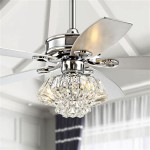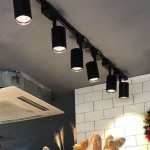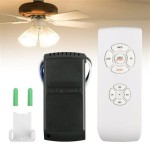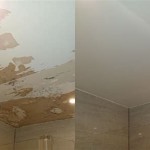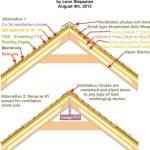The Advantages and Considerations of Drop-Down Ceiling TVs
Drop-down ceiling TVs, also known as motorized flip-down TVs, are increasingly becoming a popular option for homeowners, businesses, and institutions seeking to maximize space and integrate entertainment systems seamlessly into various environments. These systems offer a unique approach to television placement, concealing the screen within the ceiling when not in use and lowering it at the touch of a button. This article will explore the benefits of drop-down ceiling TVs, delve into the different types available, and discuss important considerations when planning an installation.
Space Optimization and Aesthetic Integration
One of the most significant advantages of a drop-down ceiling TV is its ability to optimize space. In rooms with limited wall space, unconventional layouts, or multiple purposes, a traditional wall-mounted TV might not be feasible. A drop-down system eliminates the need for dedicated wall space, allowing for the room to be used more flexibly. This is particularly beneficial in smaller apartments, kitchens, bedrooms, and open-concept living areas. Furthermore, when the TV is not in use, it is completely hidden within the ceiling, contributing to a clean and uncluttered aesthetic. This concealment is a major draw for those who prefer a minimalist or contemporary design style, as it eliminates the visual presence of a large black screen when entertainment is not desired.
This integration goes beyond mere practicality. The ability to hide the television allows for a more versatile use of the space. A living room, for example, can easily transform from a home theater to a formal entertaining area simply by retracting the screen. In a kitchen, a drop-down TV can provide entertainment during meal preparation without permanently occupying valuable counter or wall space. In commercial settings such as conference rooms, a drop-down screen can provide flexibility for presentations and video conferencing while remaining discreet when not in use. The element of surprise and technological sophistication also adds a touch of luxury and modern convenience to any environment.
Beyond space saving and aesthetic integration, a drop-down ceiling TV can also solve viewing angle challenges. Unlike fixed wall-mounted TVs, many drop-down systems offer adjustable tilt and swivel functionality. This allows users to optimize the viewing angle regardless of their seating position in the room. This is particularly useful in rooms with multiple seating areas or where the primary viewing location changes based on the activity taking place.
Types of Drop-Down Ceiling TV Systems
The market offers a variety of drop-down ceiling TV systems, each with its own features and suitability for different applications. These systems can be broadly categorized by their mounting mechanism, screen size capacity, and control options.
Motorized Systems: These are the most common type of drop-down TV system. They utilize an electric motor to lower and retract the TV screen. The motor is typically controlled by a remote control, a wall-mounted switch, or integrated into a smart home automation system. Motorized systems offer smooth and quiet operation, and they can be programmed with preset positions to ensure consistent viewing angles. The reliability of the motor is a key factor to consider when choosing a motorized system. Higher-quality motors will provide smoother operation and a longer lifespan.
Manual Systems: Although less common, manual drop-down TV systems exist. These systems rely on a manual crank or pulley system to lower and retract the screen. They are generally less expensive than motorized systems, but they require more effort to operate and lack the convenience of remote control. Manual systems might be suitable for situations where power is not available or where simplicity is preferred.
Screen Size and Weight Capacity: Drop-down TV systems are designed to accommodate a range of screen sizes and weights. It is crucial to select a system that is specifically rated for the size and weight of the television being installed. Overloading the system can lead to mechanical failure and potential damage to the TV. Manufacturers typically provide clear specifications regarding the maximum screen size and weight capacity of their products. Consulting with a professional installer is recommended to ensure proper sizing and compatibility.
Control Options: The control options for drop-down TV systems can vary significantly. Basic systems offer simple remote control functionality, allowing users to raise and lower the screen. More advanced systems can be integrated into smart home automation systems, allowing for control via smartphone apps, voice commands, and programmed routines. Some systems also offer features such as automatic shut-off when the screen is fully retracted or extended, which can help to prolong the lifespan of the motor. The choice of control options will depend on the user's preferences and the overall integration of the entertainment system.
Mounting Mechanisms: Drop-down TV systems employ various mounting mechanisms to secure the TV to the ceiling. These mechanisms typically involve a combination of brackets, hinges, and support arms. The quality and design of the mounting mechanism are crucial for ensuring the stability and safety of the installation. It is important to choose a system with a robust and well-engineered mounting mechanism that is specifically designed for the type of ceiling and the weight of the TV. Professional installation is highly recommended to ensure that the mounting mechanism is properly installed and securely attached to the ceiling structure.
Installation Considerations and Potential Challenges
Proper installation is paramount for the safe and reliable operation of a drop-down ceiling TV system. Several key considerations must be addressed during the planning and installation process.
Ceiling Structure: The structural integrity of the ceiling is a critical factor. The ceiling must be strong enough to support the weight of the TV and the drop-down mechanism. In some cases, reinforcement of the ceiling structure may be necessary to ensure adequate support. Concrete ceilings, for example, may require specialized anchors and mounting techniques. Suspended ceilings or drop ceilings are generally not suitable for direct installation of drop-down TV systems, as they lack the necessary structural strength. In these situations, it may be necessary to anchor the system to the structural ceiling above the suspended ceiling.
Wiring and Power Supply: Drop-down TV systems require a reliable power supply and appropriate wiring to connect the TV to the power source and other components, such as cable boxes, Blu-ray players, and sound systems. The wiring must be concealed within the ceiling and routed safely to the TV. It is essential to consult with a qualified electrician to ensure that the wiring is properly installed and meets all applicable electrical codes. Furthermore, consideration should be given to the placement of power outlets and cable connections to minimize clutter and ensure easy access for maintenance and repairs.
Professional Installation: Due to the complexity and safety considerations involved, professional installation is highly recommended for drop-down ceiling TV systems. A professional installer will have the necessary expertise and equipment to properly assess the ceiling structure, install the mounting mechanism, route the wiring, and configure the system for optimal performance. Professional installation can also help to ensure that the warranty on the drop-down system is valid. Attempting to install a drop-down TV system without the proper knowledge and experience can result in damage to the TV, the ceiling, or even personal injury.
Maintenance and Repair: While drop-down ceiling TV systems are generally reliable, they may require occasional maintenance and repair over their lifespan. Regular cleaning of the screen and the moving parts can help to prevent dust buildup and ensure smooth operation. If the system experiences a mechanical failure, it is important to consult with a qualified technician to diagnose and repair the problem. Attempting to repair a drop-down TV system without the proper knowledge and tools can be dangerous and may void the warranty.
Cost Considerations: The cost of a drop-down ceiling TV system can vary significantly depending on the type of system, the screen size, the control options, and the complexity of the installation. In addition to the cost of the drop-down mechanism and the TV, it is also important to factor in the cost of professional installation, wiring, and any necessary ceiling reinforcement. While drop-down TV systems can be a significant investment, they offer a unique combination of space optimization, aesthetic integration, and technological sophistication that can enhance the value and enjoyment of any home or business.
In conclusion, drop-down ceiling TVs present a compelling solution for optimizing space and integrating entertainment systems seamlessly into various environments. By carefully considering the different types of systems available, addressing the installation considerations, and seeking professional guidance, individuals and businesses can successfully implement this technology to enhance their living spaces and commercial settings.

Ceiling Flip Down Tv Lift

Drop Down Tv Mercury Slim Ceiling Lift Ultralift

32 85 Remote Flip Down Tv Lift Motorized Ceiling Mount And Price Made In Com

How To Choose The Correct Drop Down Tv Lift Firgelli

Drop Down Tv Mercury Slim Ceiling Lift Ultralift

022 Wireless Remote Control Motorized Flip Drop Down Ceiling Tv Bracket Mount Lift And Price Made In Com

Tv Lift Mechanisms Pop Up And Drop Down Lifts

Clt 70 Drop Down Ceiling Tv Lift For 32 Inch Displays Tono Systems

Drop Down Swivel Motorized Tv Lift Installation
Fold Down Ceiling Tv Lift 55 Drop Iconnect


